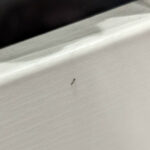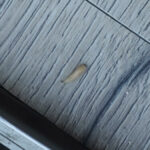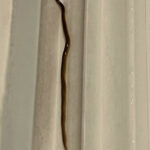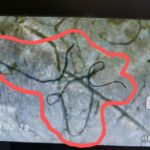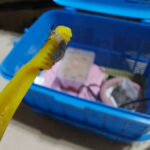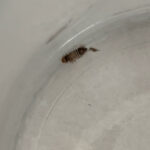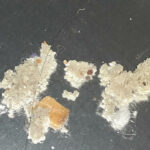Tapeworms or cestodes do not have a digestive system. Instead of consuming and digesting food, what this worm does instead is lie in the predigested contents of its host’s gut and absorb the necessary food. The head of the tapeworm, however, features hooks and suckers which, attach to the host to keep the animal in place. The rest of the body is made up of separate segments called proglottids, formed by budding from the neck region and trailing free in the host’s intestine.
Fertilized tapeworm eggs are stored in the tapeworm’s uterus. The eggs are surrounded by yolk and a protective shell. At the end of the tapeworm lies a sac of eggs. Several segments become detached at a time and pass out with the host’s feces. The tapeworm, much like the fluke, may have more than one intermediate host. For example, the fish tapeworm (diphllybothrium) is found in the intestines of men, dogs, and cats. They may grow up to 90 feet long and they have two intermediaries. The pork tapeworm, (Taenia solium) has only one.
The pig’s digestive juices dissolve the shell and a tiny embryo with six hooks breaks free and makes its way through the intestine. It enters the blood stream, and eventually reaches every region of the muscles. In the muscles, the tapeworm encysts as a bladderworm until it is eaten by another human.
Tapeworm infections are curable, but the key to catching them before they get out of hand is recognizing the symptoms. Tapeworms may cause:
Loss of appetite
Abdominal discomfort
Rashes
Insomnia
Eye pain
Protein deficiency
Gas
Constipation
Mental dullness
Fever
Coughing
Nervousness
Vomiting
Nausea
Anemia
Stomach bloating
Bloody stools
Weakness
Chills
Diarrhea
Fatigue
It is important to keep in mind that these symptoms are also common symptoms for many other diseases and conditions, so its best to consult a physician for an accurate diagnosis. A physician will test for parasites by taking a feces sample and examining it for parasites and/or eggs. Fortunately, the vast majority of parasites can be eliminated by using some of the same methods or by ingesting some of the same types of medications or antibiotics.
Parasites can be eliminated from the body with colon cleansers and/or colonics, several rounds of antibiotics or medications as prescribed by a physician, and/or by utilizing a number of different herbal or natural remedies. It’s best to consult an herbalist for the very best herbal remedies to get rid of human intestinal worms. Several popular remedies are considered effective for treating intestinal parasites. These include:
Black walnut leaves, wormwood, quassia, cloves, male fern
Capsicum, wormwood, sage
Cramp bark, pumpkin seed, capsicum, thyme, garlic
Black walnut, pine needles, sassafras
In general, herbal remedies should be taken orally for a minimum of two weeks. Some individuals may complain of re-infection. It is very important to change your eating habits immediately if you suspect a parasite or worm infection. It’s best not to go back to your regular eating habits in order to prevent re-infection. Certain foods, spices, and beverages might help to ward off parasite infections or they will keep you from becoming infected through food or water sources. These include:
Cranberry juice
High-fiber foods
Pumpkin seeds
Garlic
Pomegranates
Apple cider vinegar
Figs
Bottled or distilled water
Thoroughly cooked meats and seafood
Organic fruits and vegetables, washed thoroughly
Avoid the following foods and activities if possible:
Undercooked meats
Chestnuts
Sugar
Watercress
Refined carbohydrates
Swimming in lakes, rivers, an streams
Using the microwave to cook meats
Lastly, never underestimate the power of clean hands. You should always wash your hands thoroughly after using the restroom whether it is in your home or in a public place. In addition, wash kitchen utensils and countertops with hot soapy water after each use and wear gloves when changing your cats litter box or cleaning up after your pets.
Source
Mitchell, James. “Flatworms, Flukes, and Tapeworms.” The Random House Encyclopedia. 3rd ed. 1994.
All About Worms is always free, always reader-supported. Your tips via CashApp, Venmo, or Paypal are appreciated! Receipts will come from ISIPP Publishing.



